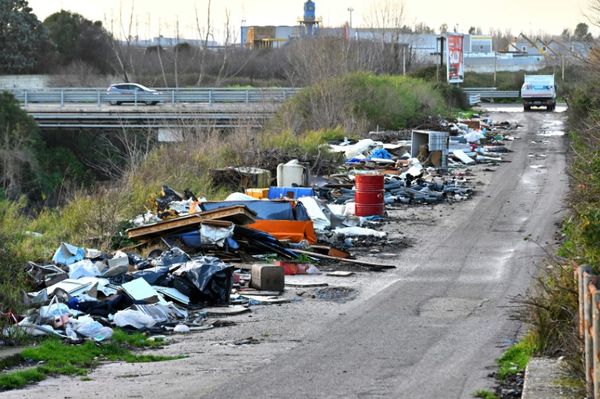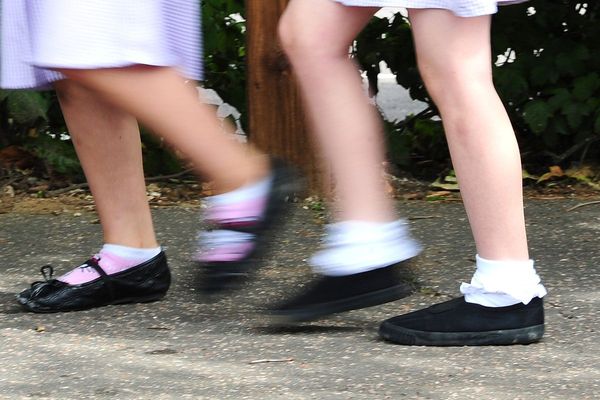Australian businesses are hurrying to meet a deadline to phase out many types of single-use plastics.
The federal government wants to phase out plastics that end up in landfill, including expanded polystyrene, plastic bags, plastic cutlery and takeaway containers by the middle of next year.
So, how will that happen?
First, here are some of the facts.
Australians consume about 3.4 million tonnes of plastics a year, according to figures from the Environment Department.
About 320,000 tonnes of that is recycled, and the rest ends up in landfill, where it can take hundreds of years to break down.
Some states and territories have already moved to ban plastic bags, straws and takeaway containers.
But what about polystyrene?
Australia imports about 52,000 tonnes of polystyrene resin every year, to make into things like insulation, as well as single-use packaging for white goods and packing beads for posting boxes.
About a quarter of it is recycled, through business programs or at council depots, and the rest ends up in landfill.
The good thing about expanded polystyrene is it's light, sturdy, and can keep things at the right temperature, so it's good for transporting food and medicine.
But it is plastic, so it takes a long time to break down in landfill, and the deadline to phase it out is approaching.
What are the alternatives?
Some businesses are already moving away from polystyrene.
Officeworks used to wrap all its furniture in polystyrene.
Now it uses thick cardboard and tissue paper.
The company's head of sustainable development, Ryan Swenson, says the company made the move to cardboard last year.
He says cardboard is strong enough to protect the product, along with some reinforced corners.
It is light enough to carry easily, and the cost works out the same.
Mr Swenson says the company is "working collaboratively with our suppliers and thinking creatively to design the solutions that reduce environmental impact but also help our customers take more sustainable action".
The company also sells bamboo and paper cutlery instead of plastic, but phasing out bubble wrap will take a bit longer.
"There's more work to do," Mr Swenson said.
What about temperature control?
Cardboard is great, but it can't keep products hot or cold like polystyrene can.
In a manufacturing plant in Sydney, Joanne Howarth is overseeing what she hopes will be the end of polystyrene.
Ms Howarth is the chief executive of Planet Protector Packaging, a company that makes Woolpack — a lining made from waste wool.
She says it can do everything that polystyrene can, without taking hundreds of years to break down in landfill.
"Since 1954, polystyrene has dominated this space, it's been the go-to in terms of best performance," she said.
"And it's not until now that there's been a viable alternative in terms of temperature. That's the big challenge."
Ms Howarth says wool packaging is now being used for shipping goods like seafood and medicine.
She says the product is also good for the environment because it's made from waste wool that normally ends up in the bin.
"This is the material that's on the underbelly of the sheep and until now there was not a commercial use for it … ordinarily it's deemed a waste stream and it goes to landfill," she said.
How is the transition going?
The chief executive of the Australian Packaging Covenant Organisation, Brooke Donnelly, says many businesses are already phasing out polystyrene ahead of the deadline in 2022. She is confident it will be met.
"It is about rethinking how we engage with products and how we design them to work effectively," she said.
"These are some of the great examples, and there are a lot of them, of where businesses are actually rethinking how you engage with the product and how consumers will deal with it once they've finished with that packaging as well."
How can consumers be involved?
While the government is making legislative changes, businesses say the real pressure to move away from plastics comes from customers.
Ms Donnelly says companies will listen to consumers.
"Consumers have the most powerful voice of all and they have the ability to vote at the register, make a decision," she said.
What can I do with all my polystyrene?
Ever bought a new TV or fridge only to have the polystyrene fill up your rubbish bin?
Most local councils won't accept it in kerbside recycling.
But you can take it to your local recycling centre, where it can be made into other products. Check here for drop-off sites near you.
Or, you can turn polystyrene boxes into a handy worm farm, cut down on food waste and make soil for your plants.
Of course, you could also just buy less stuff that comes wrapped in polystyrene, by putting off new purchases like TVs or fridges.







